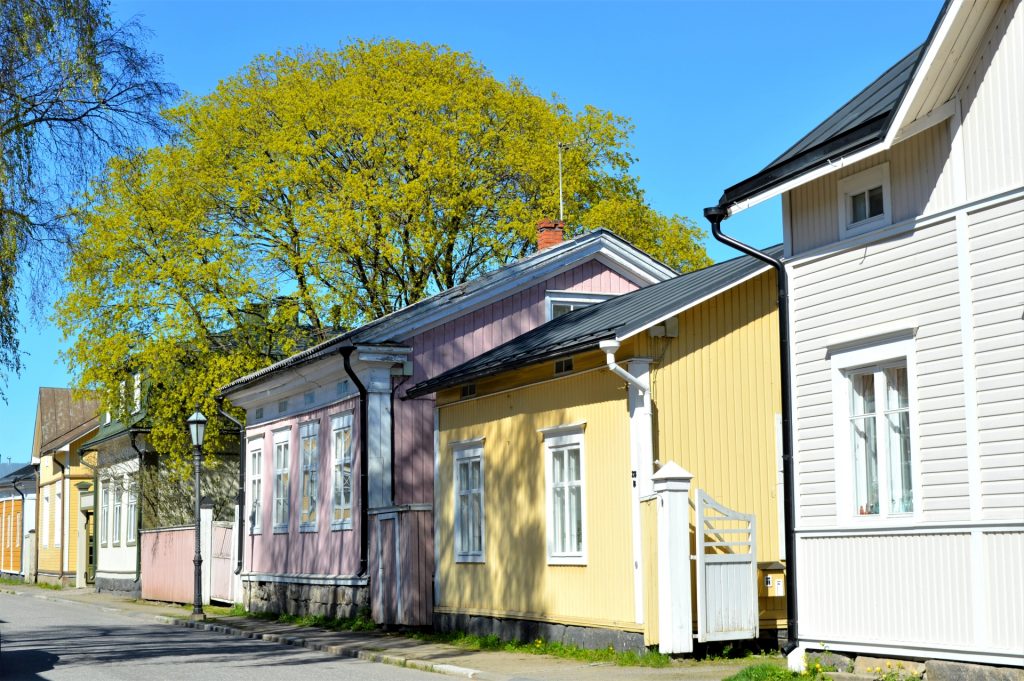We are now in the heart of Kokkola’s old town, Neristan, which is one of Finland’s more valuable and best-preserved historical wooden urban districts. The city was almost entirely destroyed in a fire in 1664, after which it was given a regular grid street plan. This was produced in 1665 by Johan Persson Gädda, in accordance with the renaissance ideal for cities. The custom of placing the façade of the main building towards the street and domestic and outbuildings to the rear of the plot dates from this time. As a consequence of numerous fires, the majority of the preserved buildings in Neristan date from the 19th century.
In 1830, when, by tonnage, Kokkola’s merchant fleet was the largest in the country, 35 Ship’s Masters and around 300 sailors lived in the city. The city’s overall population numbered around 2400.
Over the course of time, the city became divided in everyday speech into Neristan and Oppistan, derived from Swedish and meaning the “Lower Town” and “Upper Town” respectively. The city’s richest merchants and ship-owners lived in Oppistan, and the city’s finest houses and public buildings were located there. Neristan was the residential area for craftsmen and seafarers and houses there were more modest. The small sailor’s homes date from the early 19th century and are representative of the city’s more modest dwellings.
In the 1960s, Neristan’s future was under threat from a plan to tear down the old wooden houses and replace them with modern apartment buildings. The cultural historical value of the area was recognised later and Neristan was granted protected status in 1980s. Today Neristan is a desired residential area, whose traditions are chosen out of respect for old wooden architecture and carpenters’ skills.
You can walk along Pormestarinkatu down the hill and back to the Market Square.
Another impressive neighbourhood (area next to the Renlund School), Mäntykangas, dominated by wooden houses can be found right in the middle of the city, with buildings mostly dating back to the 1920s. What makes the area unique is its town plan, which is based on the garden city ideology. Looking at the area one will notice the special characteristics of a garden city: small asymmetrical squares, green areas, and curved streets. Those who are interested in beautiful old buildings should also consider a visit to Sannanranta. It is one of Finland’s oldest and largest villa areas and a coherent example of the villa culture that began in the 19th century. The largest villas have two floors, decorated with plenty of cuttings and battens.
